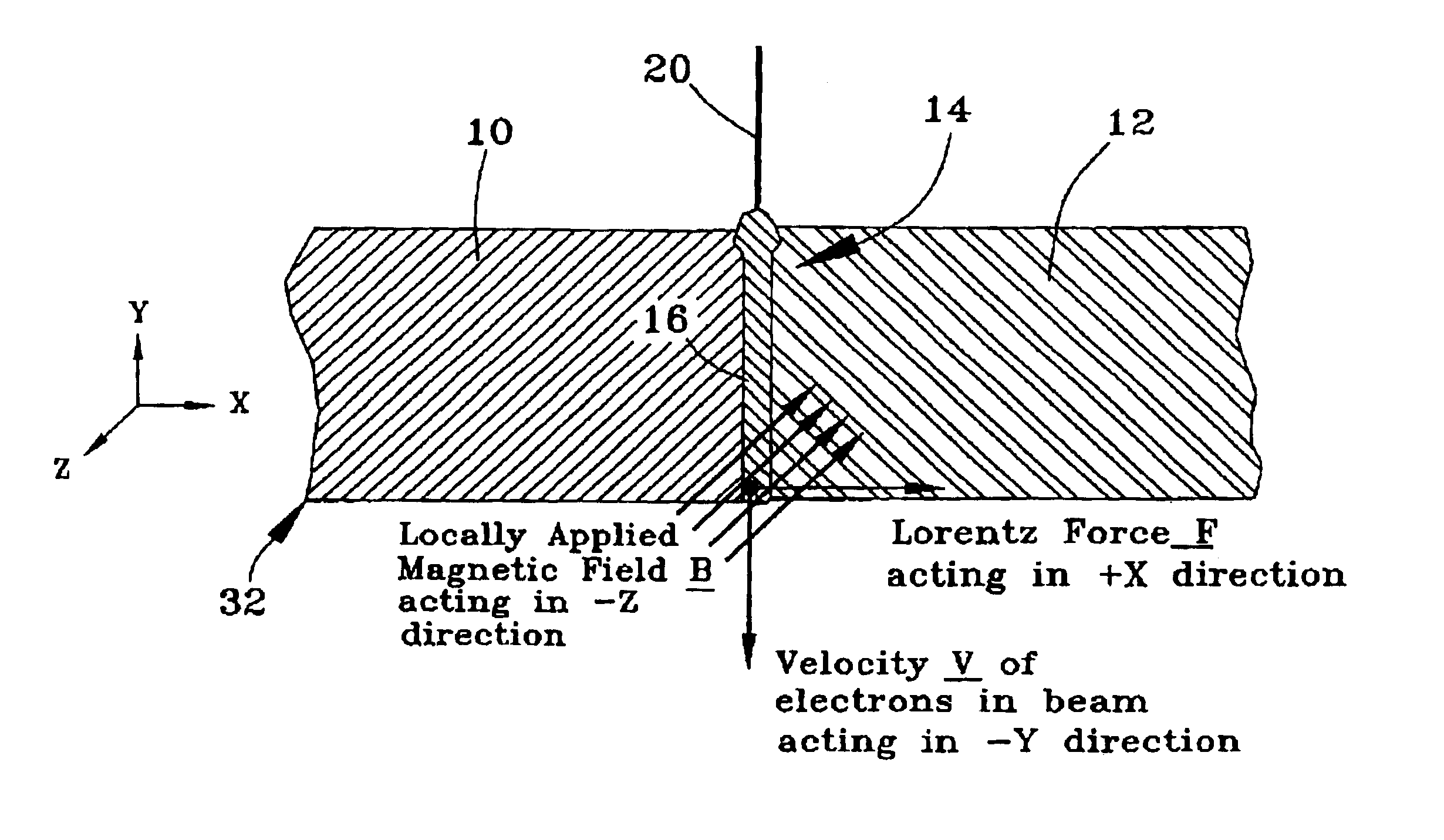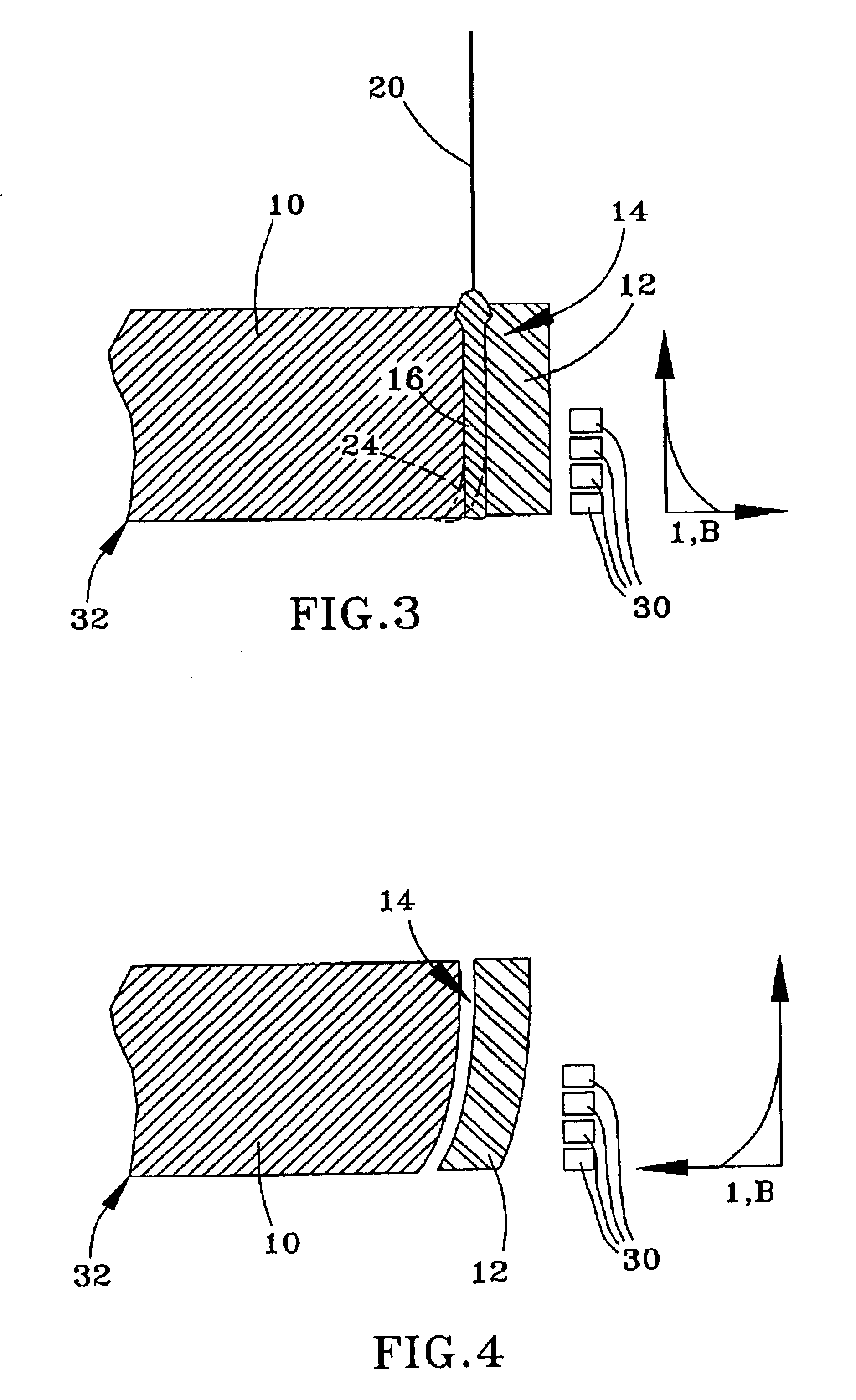Electron beam welding method
- Summary
- Abstract
- Description
- Claims
- Application Information
AI Technical Summary
Benefits of technology
Problems solved by technology
Method used
Image
Examples
Embodiment Construction
[0019]As depicted in FIGS. 2, 3 and 4, the invention makes use of a magnetic field produced by one or more coils 30 that are oriented to steer an electron beam 20 through an interface 14 formed by opposing surfaces of two components 10 and 12 for the purpose of welding the components 10 and 12 at the interface 14 and thereby form a welded assembly 32. For simplicity, the same reference numbers are used for like elements throughout FIGS. 1 through 4. The components 10 and 12 may be formed of a variety of metal alloys, including steels and superalloys used to form cast turbine components of gas and steam turbines.
[0020]In FIGS. 2 and 3, the surface interface 14 is represented as being substantially rectilinear, while in FIG. 4 the surface interface 14 is represented as being arcuate. With respect to the situation represented in FIGS. 2 and 3, the invention finds application when the components 10 and 12 are formed of metals that are dissimilar such that the beam hooking phenomenon occ...
PUM
| Property | Measurement | Unit |
|---|---|---|
| Length | aaaaa | aaaaa |
| Magnetic field | aaaaa | aaaaa |
Abstract
Description
Claims
Application Information
 Login to View More
Login to View More - R&D Engineer
- R&D Manager
- IP Professional
- Industry Leading Data Capabilities
- Powerful AI technology
- Patent DNA Extraction
Browse by: Latest US Patents, China's latest patents, Technical Efficacy Thesaurus, Application Domain, Technology Topic, Popular Technical Reports.
© 2024 PatSnap. All rights reserved.Legal|Privacy policy|Modern Slavery Act Transparency Statement|Sitemap|About US| Contact US: help@patsnap.com










